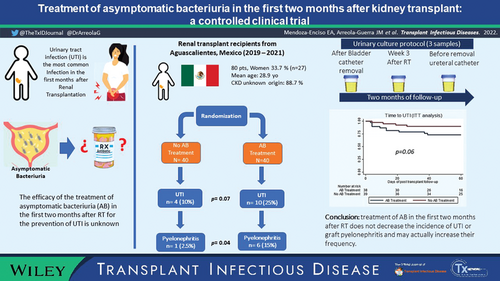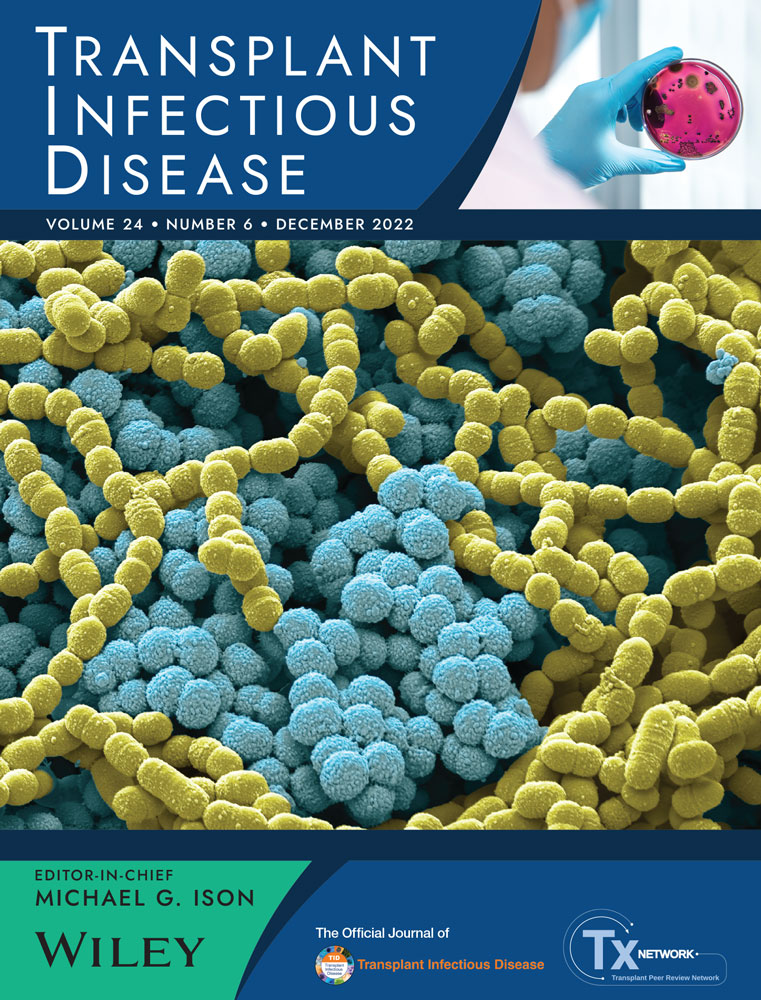Treatment of asymptomatic bacteriuria in the first 2 months after kidney transplant: A controlled clinical trial
Abstract
Background
The incidence of urinary tract infections (UTIs) in the first 2 months postrenal transplantation (pRT) is very high. We evaluate the efficacy of asymptomatic bacteriuria (AB) screening and treatment on the incidence of UTI in the first 2 months pRT
Methods
We conducted a randomized controlled clinical trial. A urine culture was obtained in all patients on the day of the bladder catheter removal, on week three, and before removal of the ureteral catheter. The intervention group received treatment for AB. The control group did not receive treatment. The primary outcomes were the cumulative incidence of UTI and/or graft pyelonephritis and the time to the first episode of UTI and/or graft pyelonephritis
Results
Eighty patients were randomized, 40 in each group, and the median follow-up was 63 days (IQR 54–70). The average age was 29.8 years and 33.7% (n = 27) were women. The incidences of UTI (n = 10, 25 % vs. n = 4, 10%, p = .07) and pyelonephritis (n = 6, 15% vs. n = 1, 2.5%, p = .04) were greater in the intervention group, as also shown in the survival analysis: UTI (HR2.8, 95% CI 0.8–9.1, p = .07) and pyelonephritis (HR 6.5, 95% CI 0.8–54.7, p = .08), respectively. The most commonly isolated bacterium was Escherichia coli (n = 28, 59.5%), and over half were E. coli with extended-spectrum beta-lactamases (n = 15). A major limitation was not obtaining the calculated sample size due to a delay in patient recruitment resulting from the COVID-19 pandemic
Conclusion
CONFLICT OF INTEREST
The authors declare that there is no conflict of interest that could be perceived as prejudicing the impartiality of the research reported.





